APOE4/4 is linked to damaging lipid droplets in Alzheimer's disease microglia
- PMID: 38480892
- PMCID: PMC10990924
- DOI: 10.1038/s41586-024-07185-7
APOE4/4 is linked to damaging lipid droplets in Alzheimer's disease microglia
Abstract
Several genetic risk factors for Alzheimer's disease implicate genes involved in lipid metabolism and many of these lipid genes are highly expressed in glial cells1. However, the relationship between lipid metabolism in glia and Alzheimer's disease pathology remains poorly understood. Through single-nucleus RNA sequencing of brain tissue in Alzheimer's disease, we have identified a microglial state defined by the expression of the lipid droplet-associated enzyme ACSL1 with ACSL1-positive microglia being most abundant in patients with Alzheimer's disease having the APOE4/4 genotype. In human induced pluripotent stem cell-derived microglia, fibrillar Aβ induces ACSL1 expression, triglyceride synthesis and lipid droplet accumulation in an APOE-dependent manner. Additionally, conditioned media from lipid droplet-containing microglia lead to Tau phosphorylation and neurotoxicity in an APOE-dependent manner. Our findings suggest a link between genetic risk factors for Alzheimer's disease with microglial lipid droplet accumulation and neurotoxic microglia-derived factors, potentially providing therapeutic strategies for Alzheimer's disease.
© 2024. The Author(s).
Conflict of interest statement
T.G.B. is a paid consultant to Aprinoia Therapeutics and Biogen. E.M.R. is a scientific advisor to Alzheon, Aural Analytics, Denali, Retromer Therapeutics and Vaxxinity and a cofounder and advisor to ALZPath. The remaining authors declare no competing interests.
Figures

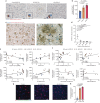



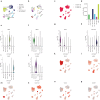

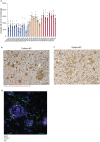
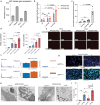

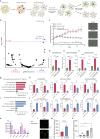

Update of
-
APOE4/4 is linked to damaging lipid droplets in Alzheimer's microglia.bioRxiv [Preprint]. 2023 Jul 25:2023.07.21.549930. doi: 10.1101/2023.07.21.549930. bioRxiv. 2023. Update in: Nature. 2024 Apr;628(8006):154-161. doi: 10.1038/s41586-024-07185-7. PMID: 37546938 Free PMC article. Updated. Preprint.
References
-
- Alzheimer, A. Über eine eigenartige Erkrankung der Hirnrinde. Allg. Z. Psychiatr. Psych. Gerichtl.Med.64, 146–148 (1907).
MeSH terms
Substances
Grants and funding
LinkOut - more resources
Full Text Sources
Medical
Molecular Biology Databases
Research Materials
Miscellaneous

